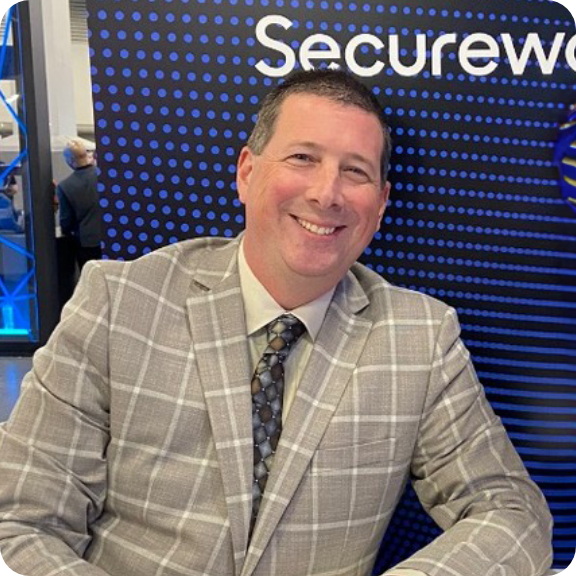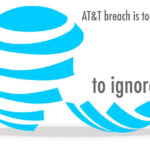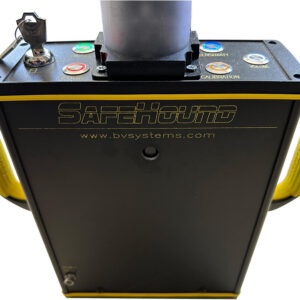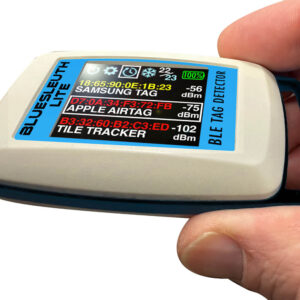Your cart is currently empty!
How Can We Secure Nuclear Facilities From Ourselves?
Cellular phones pose a security threat to every industry needing trade secrets, authorized-only areas and vulnerable infrastructure. The nuclear power sector is especially susceptible. Forget terrorists and international spying. Personal devices used by all employees are vulnerable to hackers and could be used to steal sensitive information or introduce malware into the facility’s computer system. Some nuclear facilities have attempted to control the risks by banning smartphones, but even low-end phones without cameras or data connections pose a potential threat. But we all carry cell phones so how can we secure nuclear facilities from ourselves?
Security personnel need a fast and non-intrusive way to scan employees, contractors and vendors for cellular phones.
In July 2015, a Wired article featured researchers in Israel demonstrating a method of stealing data from air-gapped computer systems using a low-end feature phone. The phone acts as a receiver for electromagnetic signals transmitted by the computer. With the right equipment, an attacker could intercept the stolen data up to 30 meters away.
The method the researchers used requires malware on both the computer and the phone, but the computer malware has a small footprint and is difficult to detect using antivirus software. And just like the vulnerabilities nearly 1 billion Android smartphones suffer from, the computer malware could potentially be installed through the supply chain, by vendors or employees with physical access to the computer or by outsiders using social engineering techniques. Security personnel need a fast and non-intrusive way to scan employees, contractors and vendors for cellular phones.
SentryHound is the perfect solution. By forcing all foot traffic through a common portal or entryway, you reduce the need to scan every sure inch of a facility with costly TSCM (Technical Surveillance Counter Measures) devices. As the subject steps through the portal, SentryHound detects any phone, laptop or MP3 player by picking up signals from ferromagnetic materials used in their construction. It does not rely on picking up RF signals, so phones on or off and even hidden inside bags and body cavities will be detected. Unlike traditional metal detectors, the SentryHound is not fooled by ordinary metallic objects such as jewelry or fittings on clothing. And also unlike traditional metal detectors, SentryHound is highly sensitive to any cell phones, laptops or tablets passing through. Our consumer mobile devices have become increasingly made of plastic parts which makes the prospect of using traditional metal detection to secure your nuclear facility from unauthorized mobile devices, an uncertainty at best.
When SentryHound sniffs out a cellular phone, it triggers an audible alert and illuminates LEDs mounted on the poles in one of 12 zones nearest to the detected device. The SentryHound also has a communications port that can trigger an external device such as a camera or remote alarm. The system is portable, AC or battery powered and can be used indoors or outdoors.
Keep cellular devices and the risks they pose out of your nuclear power facility by contacting BVS today.

Scott Schober
CEO | Author | Speaker at Berkeley Varitronics Systems
Scott Schober presents at cybersecurity and wireless security conferences for banking, insurance, transportation, construction, telecommunications and law enforcement industries. He has overseen the development of dozens of wireless test, security, safety and cybersecurity products used to enforce a “no cell phone policy” in correctional, law enforcement, and secured government facilities. Scott regularly appears on network news programs including Fox, Bloomberg, Good Morning America, CNN, MSNBC, NPR and many more. He is the author of 'Senior Cyber', 'Cybersecurity is Everybody's Business' and 'Hacked Again', the “original hacker’s dictionary for small business owners” - Forbes Magazine.
Our Newsletter
Lorem ipsum dolor sit amet, consectetur adipiscing elit. Aliquam mattis ligula vitae leo scelerisque, sit amet feugiat ex venenatis.
"*" indicates required fields
Latest Posts
Our Best Sellers
How can we help?
Lorem ipsum dolor sit amet, consectetur adipiscing elit. Nunc dictum aliquet justo sit amet consectetur. In tempor lobortis ante vitae ornare. Praesent feugiat magna at tempor consequat. Aenean in iaculis libero, aliquam imperdiet mi.










Leave a Reply